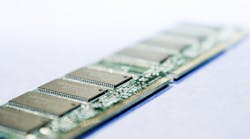Samsung expects its operating profit to decline by more than 55% in the second quarter as demand for memory chips used in smartphones and data centers decelerated. The company's chip business, which accounts for most of its total profits, has suffered over the last year as customers struggle to get through surplus inventory of both DRAM and NAND, which has weighed on the price of memory chips.
Samsung on Friday forecast operating profit of around $5.6 billion, slipping from $12.7 billion in the second quarter of 2018. The world’s largest producer of memory chips has struggled to weather an ongoing slowdown in demand for long-term storage and short-term memory chips, which has eroded profits over the last year. The company will report its final financial results before the end of the month.
This is the second straight quarter where Samsung's operating has more than halved year over year. Samsung, the No.2 player in the semiconductor space, reported profits in the first quarter falling about 60% from the year before to $5.3 billion. Industry analysts say a slowdown in data center spending as well as flagging smartphones sales have stifled demand for the company's NAND storage and DRAM memory chips.
Other memory chip manufacturers are also moving to ease an oversupply of memory chips, which has pushed down NAND and DRAM prices over the last year. Micron, the largest American memory chip maker, has reduced capital expenditures on memory chip production by $1.5 billion in 2020, bringing its total to about $9 billion. The company said last month that it planned to "meaningfully" cut its capital spending in 2020.
For its part, Samsung slashed its capital spending on chips by nearly 10% last year to ease its pain.
Micron, the No.3 player in the global memory chip market, said in March it would also curb DRAM and NAND production by 5% in 2019. Last month, the company said it would cut NAND production another 5% in the fourth quarter. Sanjay Mehrotra, Micron’s chief executive, said that he sees stronger overall demand for memory chips in the second half compared to the first half of 2019 as customers get through the inventory glut.
The uncertainty surrounding the trade war between the United States and China has tormented the global chip industry over the last year. The Trump administration’s ban on supplying chips to Huawei has indirectly tamped down demand for Samsung's memory chips. That could force Samsung to further reduce its average selling prices (ASPs), industry analysts say. DRAM and NAND ASPs have already cratered in 2019.
Average DRAM prices are projected to drop 15% in the current quarter and around 10% in the fourth quarter of 2019, according to Trendforce. NAND ASPs have plunged around 40% percent since the start of 2019 and are set to decline 10% in the current quarter. Some industry analysts have pushed out a possible recovery in the memory chip market to the second half of 2020 due to the ongoing supply glut.

